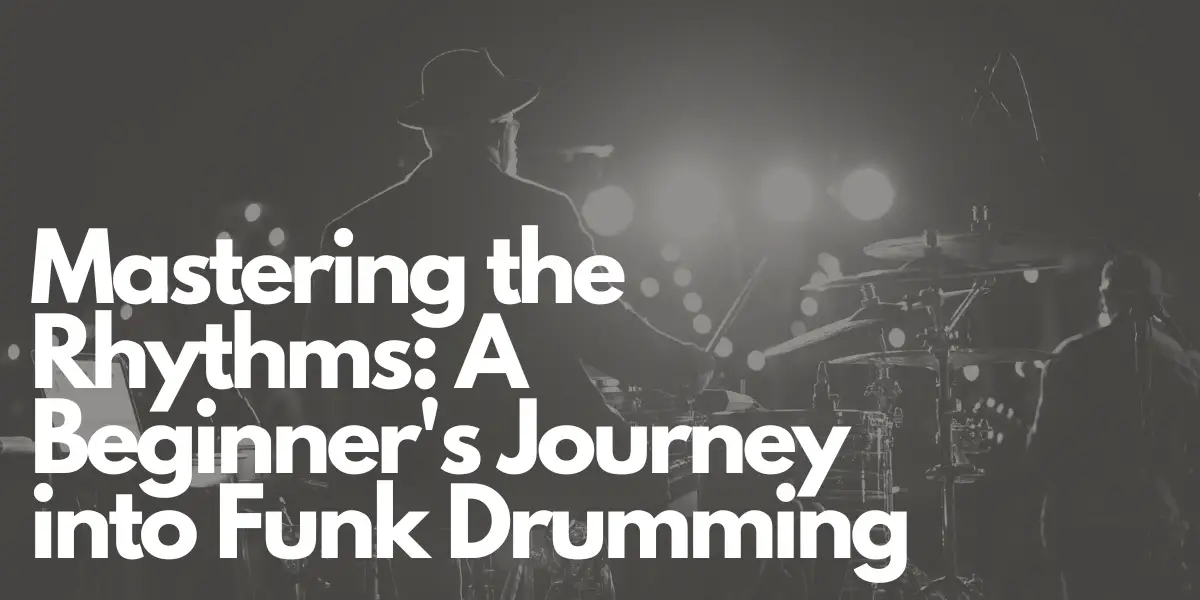Funk music, with its infectious rhythms and captivating beats, has shaped the landscape of modern music. In “Mastering the Rhythms: A Beginner’s Journey into Funk Drumming,” we embark on an exciting adventure. This journey is not just about learning an instrument but also embracing a musical legacy that has moved generations.
Understanding the Funky Foundation
Funk is not just a genre; it’s a feeling, a movement. Its roots stretch back to African rhythms, soul, and R&B. The drummer, in this vibrant world, isn’t just a musician but the heart, setting the pulse for the song. It’s crucial to grasp this central role. You’re not just keeping time; you’re creating the groove.
The Essentials of Funk
The journey begins with the basic funk beat, often called the “James Brown Beat.” This rhythm is your first step into a larger world. Syncopation, the offbeat rhythm that gives funk its distinctive feel, is next. It’s the secret sauce that makes listeners want to move. Then, there are ghost notes. These are soft beats that add a sophisticated layer to your playing. They’re not the main show, but they’re vital.
Optimizing Your Drum Kit
To truly sound funky, your drum kit needs to reflect the style. From how you tune your drums to your choice of cymbals, every aspect contributes to the overall sound. Hi-Hat techniques like the “chick” and “bark” will add a crisp texture to your beats, making them pop.
Learning from the Legends
Funk has its heroes, and understanding their style is crucial. Clyde Stubblefield, the “Funky Drummer” for James Brown, is a great start. Jabo Starks and Zigaboo Modeliste are other legends whose beats have defined the genre. Studying their rhythms isn’t just about imitation but about inspiration.
Grooves and Breaks
Funky drum breaks are a signature of the genre. They’re your moment to shine, to show off your skill, and to drive the song forward. Then there are the funk patterns, the rhythms that you’ll adapt and make your own as you play different songs.
Advancing Your Techniques
Once you’ve mastered the basics, it’s time to level up. Linear drumming is a style that plays one note at a time, adding a unique feel to your funk. Polyrhythms, where you play multiple rhythms simultaneously, add complexity and depth.
Playing in a Band
The relationship between a drummer and a bass player is crucial in funk. Together, you create the pocket, the tight groove that drives the song. Jamming and improvisation are also key. They allow you to express yourself and evolve your playing in real-time.
Practicing with Tracks
Jamming with backing tracks is an excellent way to practice. It simulates playing with a band, helping you learn how to fit into a group dynamically.
Studio Skills
Recording funk is an art in itself. From mic placement to understanding how to work with producers and engineers, these skills will ensure your funky beats sound fantastic on every track.
Beyond the Kit
A drummer in a funk band is more than just a timekeeper. You’re part of the songwriting, adding to the funkiness of the track. Understanding your role in composition is crucial.
Conclusion
As you embark on this funky journey, remember it’s about feel, attitude, and that irresistible pocket. So grab your sticks, hit the kit, and let the funk flow. Welcome to “Mastering the Rhythms: A Beginner’s Journey into Funk Drumming,” where every beat you play writes a new chapter in the story of funk.
Author: Mike P
Hi! My name is Mike! I’ve been an apartment producer/musician for 10+ years. I’ve played in punk bands, released EDM tunes on Beatport and iTunes, and have a semi-successful stock music portfolio. Read more…


